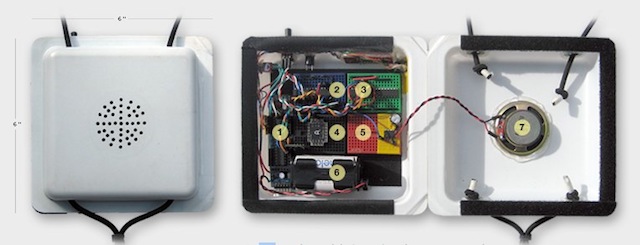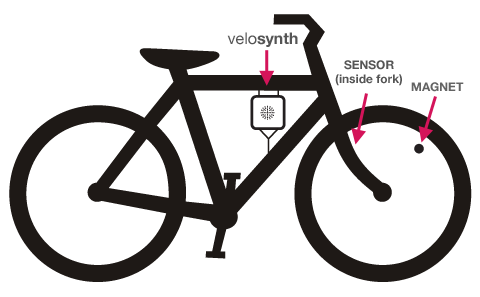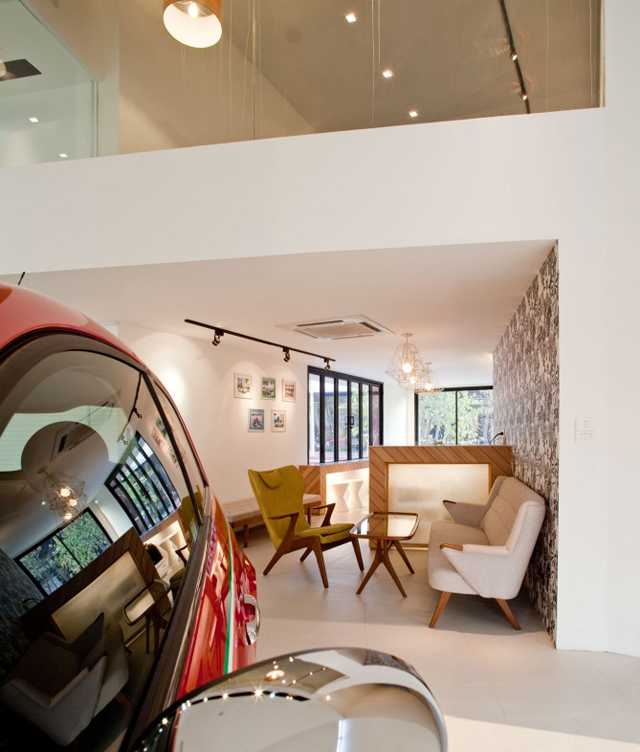Velosynth
A great project out of our own Portland, OR. Velosynth is just what it sounds like a synthesizer controlled by your bicycle. In it’s most basic form the synthesizer is controlled by the speed of your bike, however, the most exciting part of this project for me is the fact that the hardware is completely open source! Meaning users are encouraged to modify the device however they like as long as the allow others to build upon what they have done. I’m excited to see how this project grows.Mike for passing this along!
Jeff Swartz, Honor is in the source
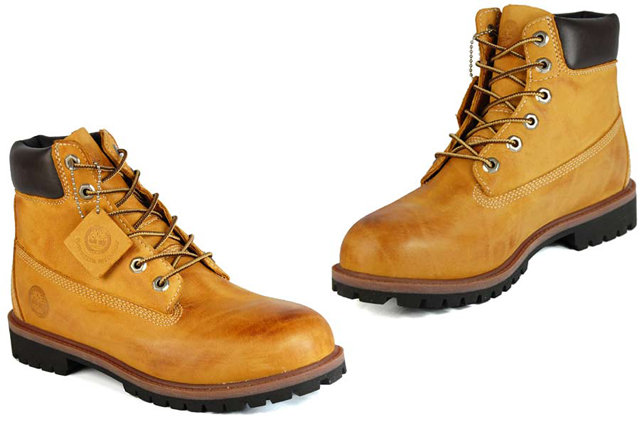
The yellow Timberland boot. The American boot, as hard working as Carharts, shearling, and blue jeans. Almost an artifact, the archetype that has not wavered or changed in style since the current CEO Jeff Swartz’ grandfather began the company. In 1960, the family company introduced innovative injection-molding technology which allowed for nearly 100% waterproof boots by attaching the soles to the leather tops without any stitching. This is craft! Craft that has been wildly successful, spread overseas, and is somewhat of an icon of the workers wardrobe.
Alot of assumptions come to mind when I see something with a high craft, or even folk value. I assume that detailed attention leads to eventual iconography, but most of all a good story usually lies behind the initial need of the object. Great sourcing, meticulous construction, and authenticity. Honor, too, plays a role in the molding of an archetype. My own assumptions add to the original story, which is needed to elevate any objects status from item to icon.
But ask CEO Jeff Swartz where the leather came from for his grandfathers beloved shoes prior to June 1, 2009, and this would be your answer:
“I don’t know.”
Impossible, right? How could you? How could he!? The food cart I frequent can tell me the name of the farm where my $5 chicken sandwich is sourced from, but Jeff Swartz can’t tell me where my $155 leather boots came from?
Jeff Swartz lays it out in an article he wrote himself for the Harvard Business Review’s Sept. issue. Generally articles written by CEO’s about their own company’s are hardly quote-worthy, but Mr. Swartz doesn’t realize how much he is revealing about his company. The backstory of the piece is that Greenpeace became tipped-off in 2009 that Timberland was sourcing some of its leather from illegally clearcut Amazonian rainforest, on tribal lands. Greenpeace emailed Swartz (to the tune of 65,000 angry emails) and Swartz then tells Harvard Business Review how to handle situations like this in a step-by-step CEO how-to, just in case this ever happens to you.
What I find so much more interesting than the backstory is, that Swartz reveals he had no idea where his leather came from for his iconic boots. It was a total mystery to him. Or anyone else that was advising him. Or his own leather sourcing departments. He says it best in this catch-all sentiment:
“As much as I didn’t want to admit it, Greenpeace was asking a legitimate question: Where was our leather coming from? Second on the list of things I didn’t want to admit was that we didn’t know the answer. We—our company, our industry—had until then [2009] never been asked, or asked ourselves, that question.”
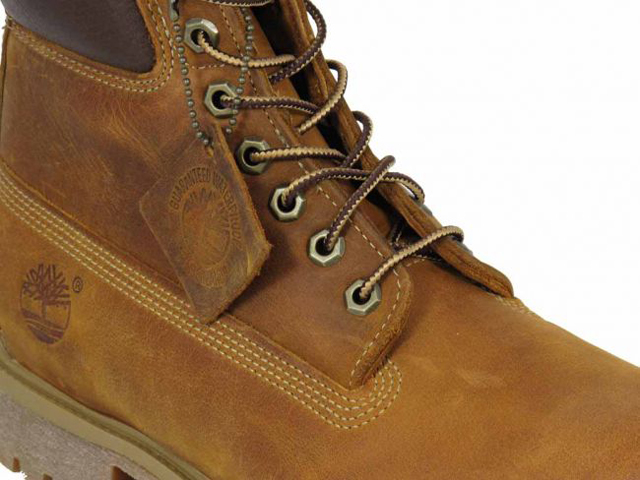
Swartz then solidifies his position by the statement “I’m a bootmaker, not a cattle rancher” which apparently frees him from the responsibility of needing to know where the materials for his boots come from, or if they come from illegal sources. “That’s not a question that was keeping me up at night—at least not before that June [2009].” I read the rest of the article but couldn’t swallow any of his advice after his bootmaker/cattle rancher comment. I wonder if anyone else sees the flaw in this model?
There is a graph depicting Timberlands financials with the caption Despite falling revenues, Timberland’s net income is on the rise on the same page as a heading labelled The Origin of Hides. Is that relevant placement? But rather than get distracted by the article, I’d love to ask a couple of questions:
Is it craft if its origin is ambiguous? And is there honor in the source?
Once, during the construction of a building in Manhattan, Timberland put up a huge billboard that read: “There is honor in anything well made: bread, boots, a building.”
I cannot ignore the hollowed-out mechanism that is Timberland prior to June 2009. This is not a functioning system. For shareholders, obviously it is, but what does it say about your archetype if you care so little about it that you know nothing of its source? We mustn’t work like this. Swartz’ complaints about the weeks-long headache of being forced to find out if his leathers truly were coming from illegally cut Amazon tribal rainforest are only a cautionary blip. That work should have been done by his grandfather. As it turns out 7% of Timberlands leather did come from Brazil. They eventually made a statement that they will require ranchers to agree in writing that the forests were not tribal, nor clearcut. Which leads one to believe that indeed, something was happening prior to June 2009 in those jungles, but no one knew about it. Because “net income was on the rise.”
Am I blinded by anything that I am creating enough not to be able to find its true authenticity? Are there little Timberlands in my daily routine that I am overlooking? Certainly, source does not equal total authenticity, but it is part of the story, and if a story has holes, someone will find them and send you 65,000 angry emails. One final note, the Greenpeace activists discovered the discrepancies using Google Earth. Oh, internet, keep us honest, keep our honor.
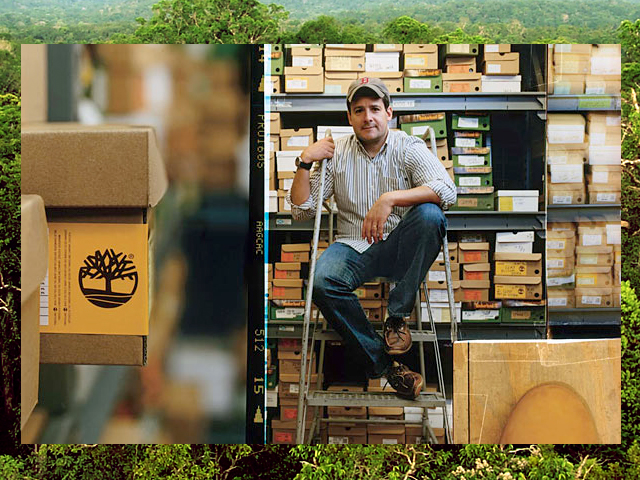
Andy + Natsuko, In Search of This World
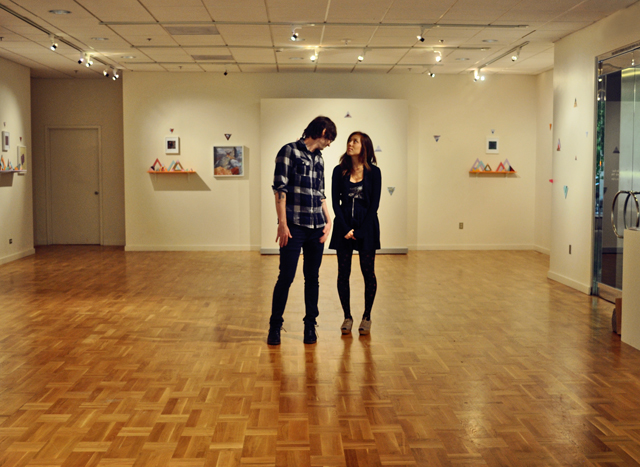
This post is long overdue. But since these guys are opening a show this Thursday, let’s pretend my tardiness was planned. I’d love to introduce two talented designers calling our grey city home. Andrew and Natsuko met while studying graphic design at Portland State University and have a show for you. It’s awesome, they let me squeak in for a sneak peek. Here are the show details:
The Littman Gallery (1825 SW Broadway, Portland) hosts Andrew Indrisie and Natsuko Pursell in their show titled “In Search of This World” at 5pm, Thursday. That’s tomorrow! Directly from Andrew + Natsuko:
A multimedia exhibition of new work…which explores curiosities of the moments, places, memories and emotions that we experience in our daily lives.
These two have stellar, solid work, I mean really they are awesome together. All of the images in the show are found from Portland State University archives, re-appropriated, sliced, drawn-on, layered, and framed. Other objects are strategically placed throughout the expanse of the gallery which draw viewers in to inspect tiny neon details, and perhaps a man in a space suit, 1″ tall. This show will not disappoint. It’s like looking into a gem, and inside are creatures, staring back at you. Excellent work guys.
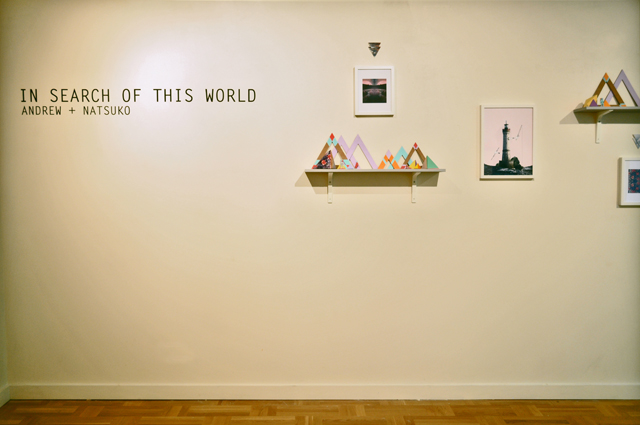
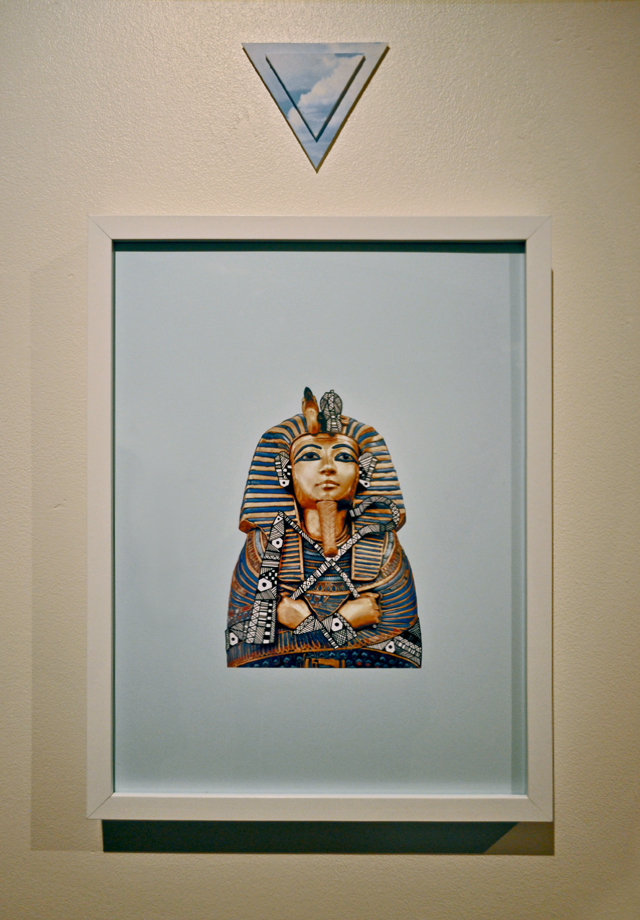

What I’m really excited to talk about though is Andrew + Natsuko’s work. Well actually less talking and more sharing, it’s about time more people in Portland knew about these two. We’re happy to have them here, although the day after their show they will be heading to Japan, and they’ve been flirting with opening a studio in Paris. What they don’t realize is no one wants them to leave Portland. So, consider staying guys?
Check out the caliber:

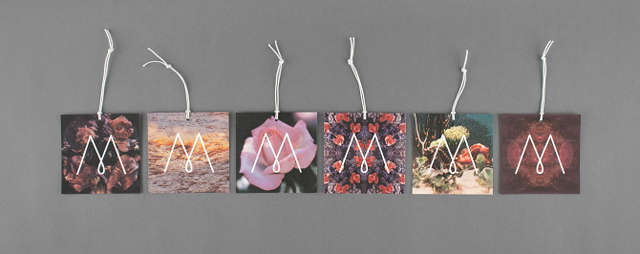
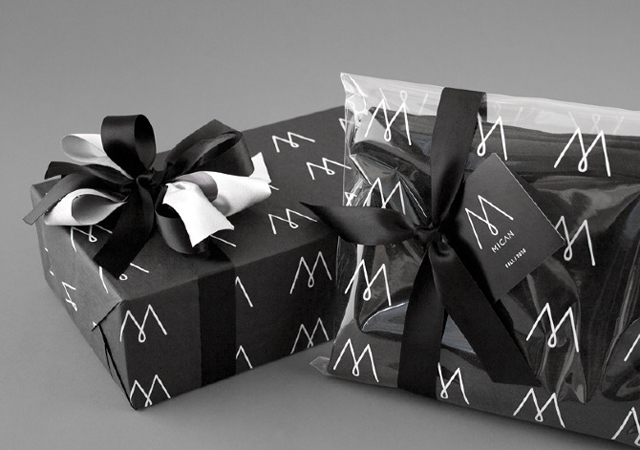
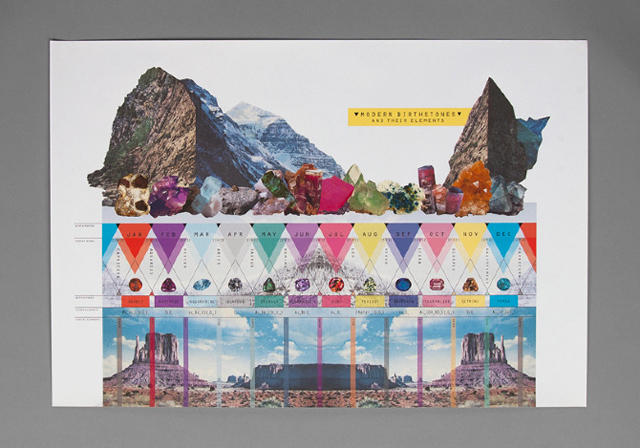
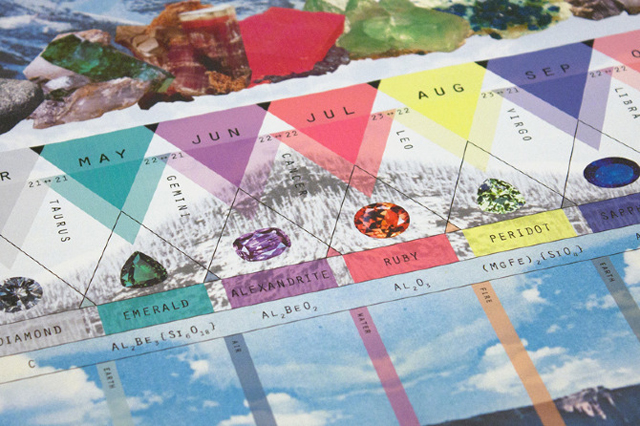
Andrew + Natsuko have their work here. Don’t forget to go to their show opening this Thursday, reception is 5-7pm at the Littman Gallery at PSU.
Automotive furniture
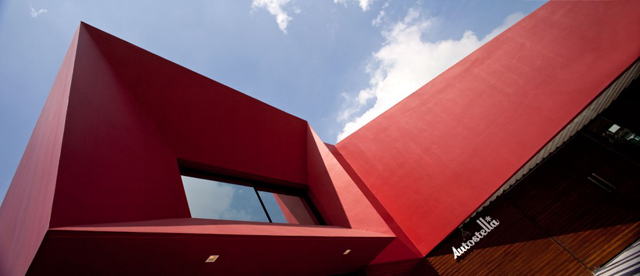
Autostella is a showroom for the new Fiat 500 being sold in Thailand. Well, new as in it was built in 2009. The showroom designers decided to neglect the sort of space that highlights the cars features, and instead opted for an intimate cafe feeling. These cars look like little sofas in this setting! Just checking these out I’m certain I’d just want to move-in.
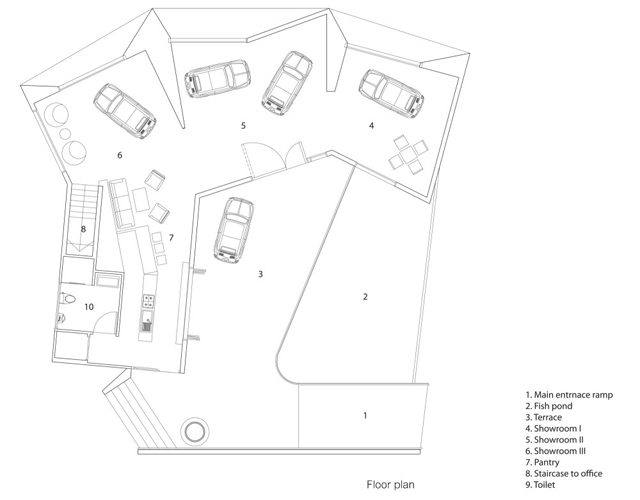
Rather than an exhibit that would make the cars look larger than they are, the space actually hems them in as little artifacts. Surprisingly, the cars appear both large and small. Was this intended?
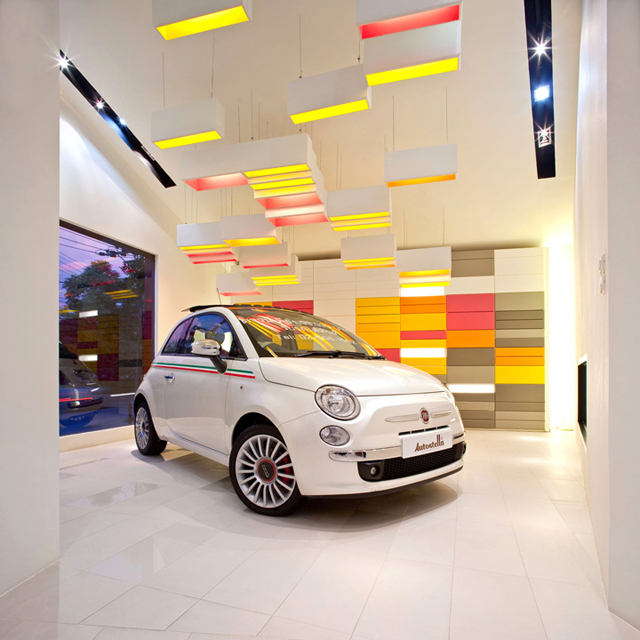
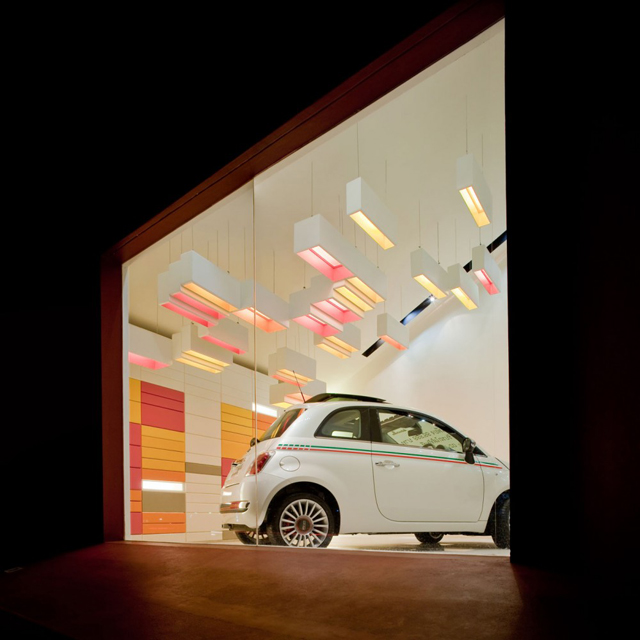
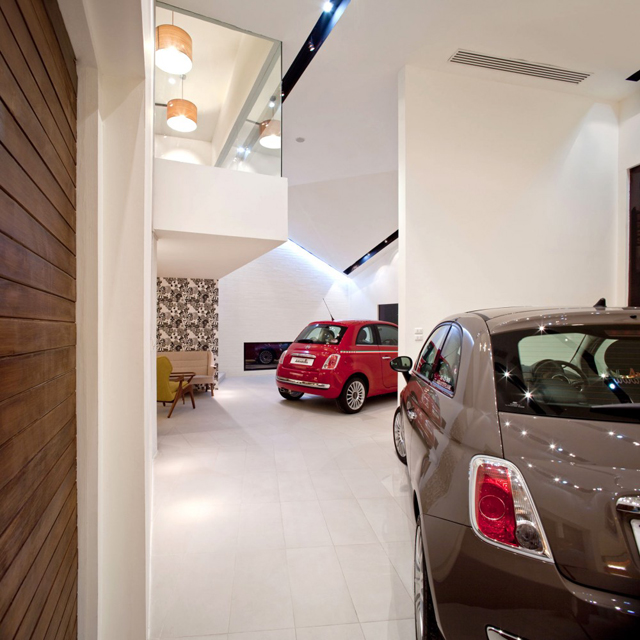
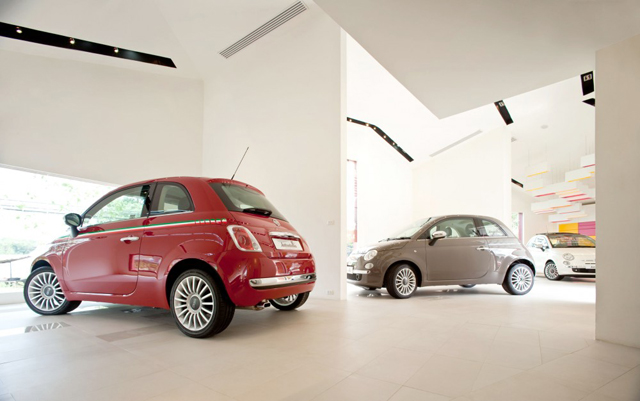
I’ll take three.
Images by Wilson Tungtunya, Archdaily
Tyler Gray makes Red Baron
This is a process post, and can I just scream out loud I love seeing process?
It feels so secret, so intimate, like you’re peeking behind the curtain that is off limits.
Alright first of all Westside Studio is a collective of photographers based in Toronto, and within that Tyler Gray shared his process for a Red Baron Beer ad. Excellent!
From the Westside blog:
I received a call from Jason Goncalves at Play Advertising back in April to shoot a summer ad campaign for Red Baron Beer. The agency’s layout called for a shot of two people standing on a dock on a hot summer day:
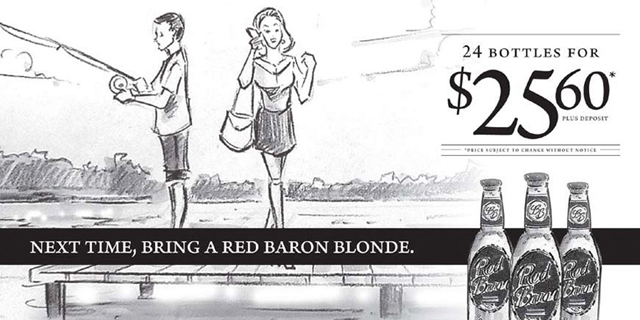
I considered shooting the ad on location near Aurora, Ontario. But the weather isn’t always great in April. And I wasn’t keen on having to stand in a cold lake behind a camera for 4 hours. Plus the water would restrict my lighting set-up and the talent would freeze.
I started looking through pictures from canoe trips I had taken in the past and came across a shot of the perfect dock! This photograph became the foundation for the final ad. All camera angles, focal lengths and lighting direction had to match this shot:
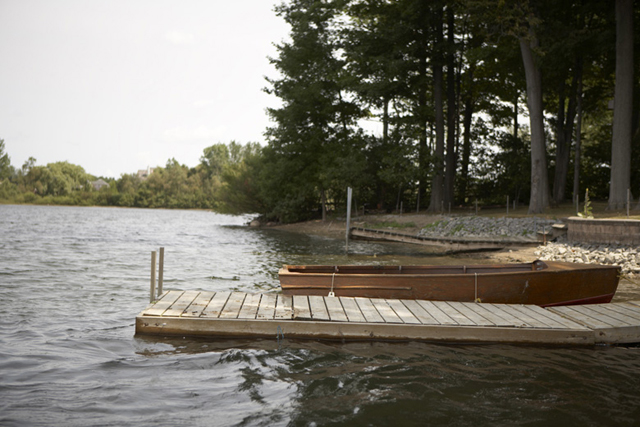
I pulled more images of trees, water and skies from various other trips and mocked up a few background options for the team at Play Advertising:
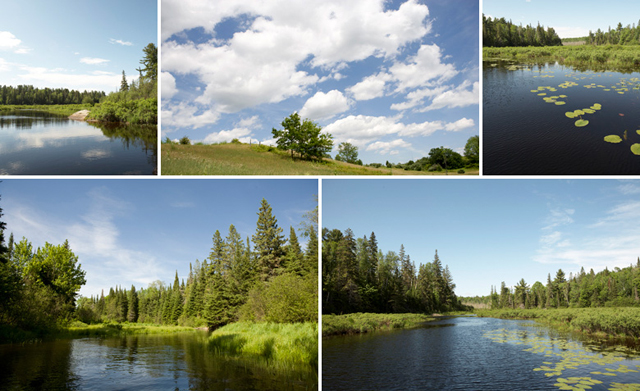
Then I shot the talent in Westside Studio’s parking lot. I had them stand on plywood so that I could easily blend the shot into the dock:
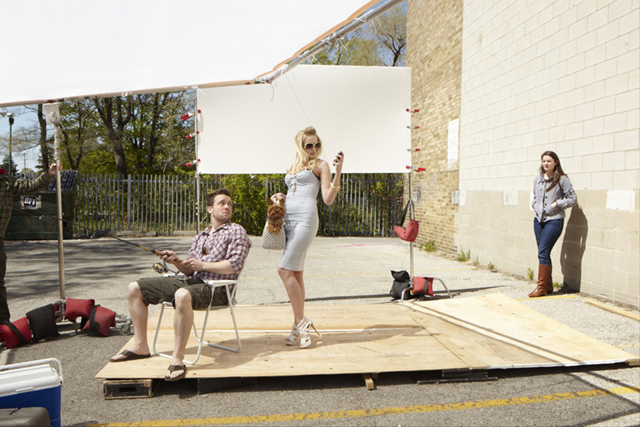
Other small elements were then added to increase the summer atmosphere:

All of these layers were then combined to create the final image:
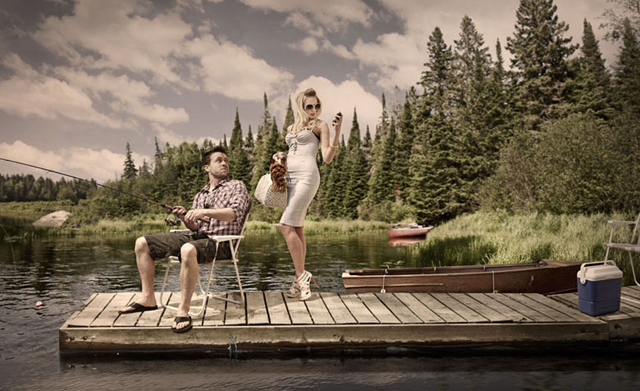
All images © Tyler Gray
